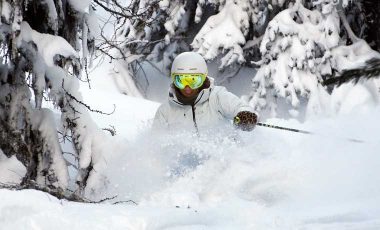Whether you’re taking your first set is skis to the baby slopes or you’re a seasoned park monkey, a quality helmet is an absolute must. A well-fitted helmet helps to keep your head from freezing on the slopes. Some even give you a convenient place to attach your sports cam or store an audio device. But most importantly, the best ski and snowboard helmets will protect your head from both minor and serious head injuries.
As well as helping to keep you alive on the slopes, the best ski helmets are ventilated, insulated, goggles compatible, and highly adjustable. Choose the right one and it will perform in all weather conditions. A good helmet doesn’t have to cost a fortune either. Top of the range models will set you back over $200 but there are plenty of budget helmets for under $100 that provide sufficient protection.
- FAQs when choosing the best ski and snowboarding helmets
- The best ski and snowboard helmets in 2024
- The best ski and snowboard helmets for kids
- What to look for in the best ski and snowboarding helmets
Summary of the best ski and snowboarding helmets in 2024
Below, we’ve picked out our favourite ski and snowboarding helmets for this year’s snow season. We’ve also explained the tech specs of snow helmet so you can choose the right one for you.
| Product | Features | Weight | MIPS | Cost |
|---|---|---|---|---|
| Smith Allure MIPS Helmet | Audio compatible | 0.9 lbs / 410g | Yes | $$ |
| Smith Vantage MIPS Snow Helmet | 21 adjustable vents | 1.1 lbs / 500g | Yes | $$$$ |
| Anon Greta 3 Snow Helmet | Audio compatible | 1.3 lbs / 580g | No | $ |
| Giro Ledge Snow Helmet | Rear goggles strap | 1.1 lbs / 500g | No | $ |
| Wildhorn Drift Snowboard and Ski Helme | Adjustable vents | 0.9 lbs / 410g | No | $ |
| Oakley MOD1 Snow Helmet | Magnetic chin strap | 1.3 lbs / 580g | No | $$ |
| Sweet Protection Switcher MIPS Snow Helmet | Audio compatible | 1.3 lbs / 580g | Yes | $$$$ |
| Smith Maze MIPS Snow Helmet | Rear goggles strap | 1 lbs / 450g | Yes | $$ |
| POC Obex SPIN Communication Snow Helmet | Built-in Bluetooth headset | 1.1 lbs / 500g | No | $$$$ |
| Smith Prospect Jr. MIPS Snow Helmet | Adjustable size as child grows | 1 lb / 45og | Yes | $$ |
| Pret Kid Lid Snow Helmet | Audio compatible | 0.8 lbs / 390g | No | $ |
FAQs when choosing the best best ski and snowboarding helmets
The best ski and snowboard helmets in 2024

Smith Allure MIPS Helmet
Construction: in-mold
Weight: 0.9 lbs / 410g
Sizing: women’s specific fit available in three sizes
Weighing around 410g for the size M, the Smith Allure MIPS Helmet is the most lightweight MIPS helmet for skiing and snowboarding on our list. As well as boasting MIPS technology for rotational brain protection, it is also incredibly comfortable with super plush and fluffy ear pads, chinstrap and internal padding.
It also provides excellent ventilation thanks to 9 fixed vents that draw warm air from inside your goggles and exhaust it out of the top vents. Clever stuff! Not to mention stylish, protective and good value.
For more information read our full review of the Smith Allure MIPS Helmet.
Pros
- Super soft lining
- Very comfortable
- Removable ear pads
- Audio compatible
Cons
- Vents fixed open
- Can’t adjust the size whilst wearing
Find the latest price on:
Smith Optics | REI
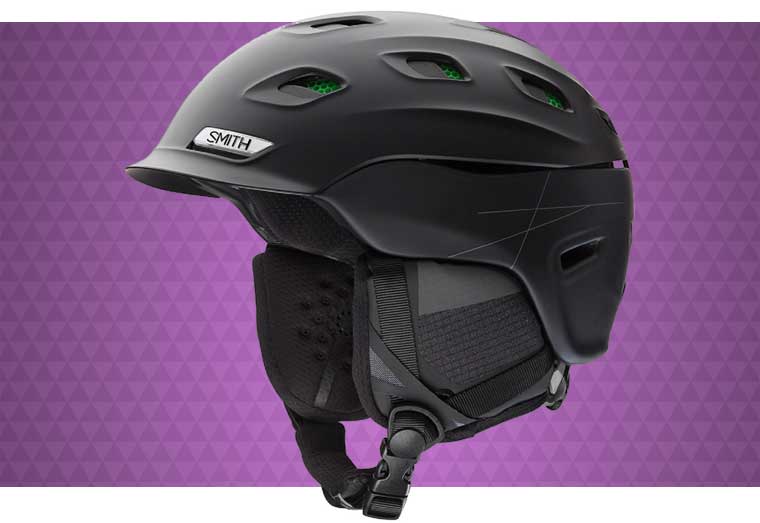
Smith Vantage MIPS Snow Helmet
Construction: hybrid in-mould
Weight: 1.1 lbs / 500g
Sizing: both men’s and women’s versions are available in three sizes. Sizes run a small due to the MIPS liner.
The Smith Vantage MIPS Snow Helmet is low-profile, lightweight, and stylish. But most importantly, it’s also one of the safest snowboard helmets on the market. The helmet is built with Smith’s trademark honeycomb Aerocore construction, featuring bombproof Koroyd material. This is combined with a MIPS liner to increase protection from multi-directional impacts. Not only does its outer shell construction protect your noggin, but it also helps to regulate temperature. The helmet has 21 adjustable vents which are controlled by two, easily-accessible sliders. On cool days the helmet’s removable ear pads and anti-bacterial liner provide extra warmth and comfort. The helmet is also ski goggle and audio compatible. Naturally, this top of the range helmet comes with a top of the range price tag which is the only major drawback.
Pros
- Comfortable and lightweight
- Very tough construction
- Adjustable ventilation
- Boa tension system
Cons
- Expensive
Find the latest price on:
Smith | REI
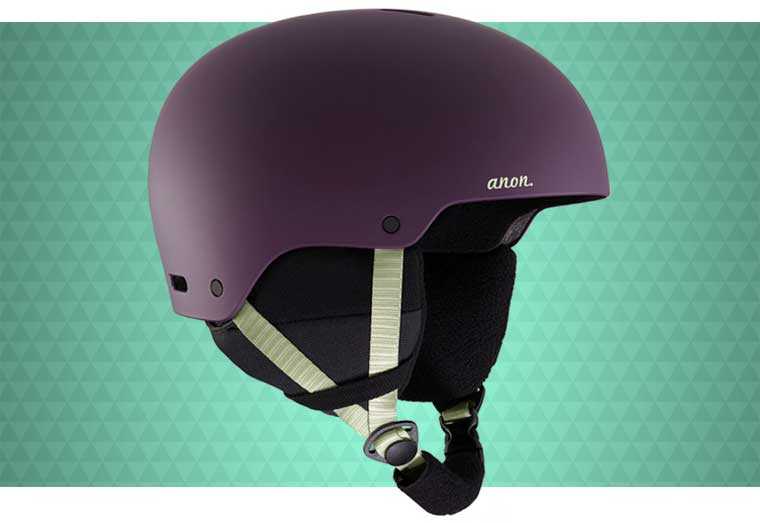
Anon Greta 3 Snow Helmet
Construction: in-mould ABS
Weight: 1.3 lbs / 580g
Sizing: women’s specific fit, three sizes, men’s version available (Anon Raider 3)
At the opposite end of the scale is the Anon Greta 3 Snow Helmet. It features a women’s specific fit with a skate-inspired design and an affordable price tag. Although there are very few additional features, this Anon snowboard helmet is made with a highly durable 2-piece Endura-shell construction. It’s also multi-season certified so you can use it for summer sports too. Ventilation is provided by six fixed-open vents while a classic fleece liner and removable fleece-lined ear pads keep you feeling toasty. The helmet is also ski goggle and audio compatible.
Pros
- Multi-season certified
- Durable outer shell
- Affordable price
Cons
- One of the heaviest on this list
- Auto-adjustment system doesn’t suit everyone
Find the latest price on:
Amazon | REI
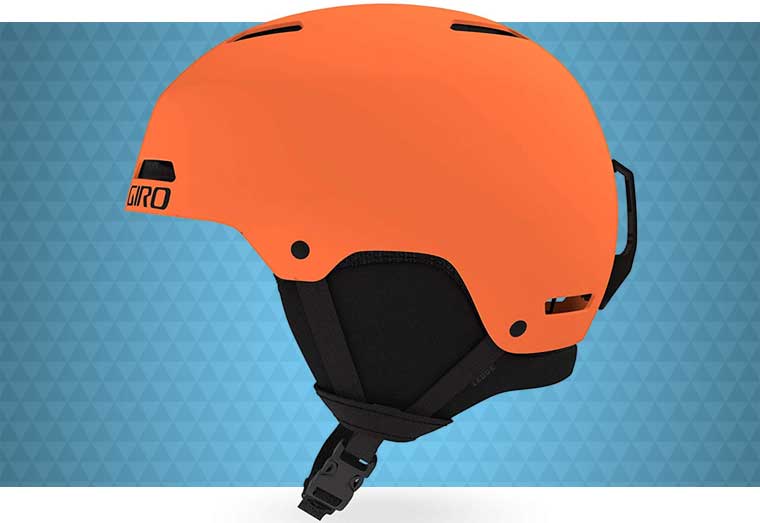
Giro Ledge Snow Helmet
Construction: hard-shell
Weight: 1.1 lbs / 500g
Sizing: available in four sizes
Another favourite for budget and beginner skiers is the Giro Ledge Snow Helmet. It’s made with a durable hard-shell outer and EPS foam liner. A MIPS liner can be purchased separately. The helmet is compatible with some ski goggles and fitted with stack vents. As the vents cannot be closed, an adjustable and removable Auto Loc 2 fit system allows you to add extra base layers.
Unlike most adjustment systems, this one can be set to one of three circumference sizes. It then automatically adjusts to cradle the head. You won’t be able to adjust the circumference size on the fly but, for most skiers, this won’t be an issue. Overall the Giro ski helmet offers excellent value for money.
Pros
- Simple and practical design
- Removable earpads and goggles retainer
- Good price
Cons
- Not compatible with all ski goggles
- Vents cannot be closed
Find the latest price on:
Amazon
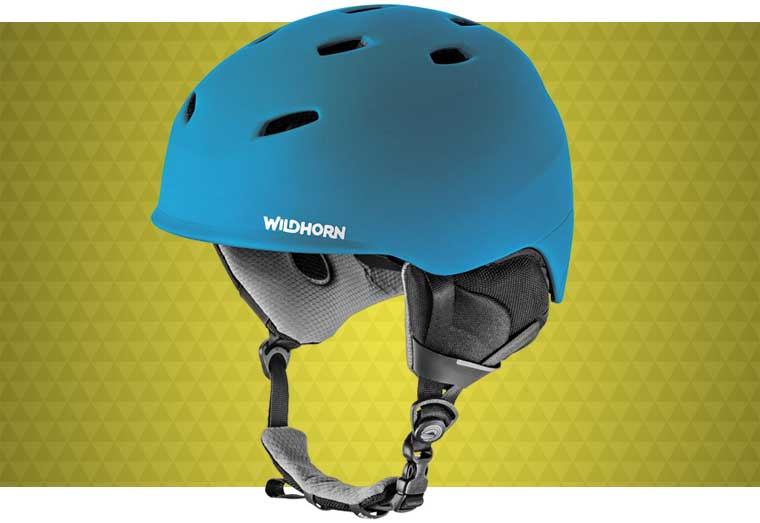
Wildhorn Drift Snowboard and Ski Helmet
Construction: in-mould
Weight: 0.9 lbs / 410g
Sizing: three sizes available
As a supplier for the U.S. Ski Team, Wildhorn Outfitters is known for making quality helmets at a reasonable price. The Wildhorn Drift is a low-profile ski helmet that balances protection with weight and comfort. It’s an in-mould helmet with an EPS foam liner. A fine-tune adjustment system lets you adjust the fit from a dial at the back of the helmet. There’s also an adjustable goggle strap. Additionally, the helmet features adjustable vents, allowing greater temperature control. Just open and close the vents as needed. This is a rare feature for ski helmets in this price range.
Pros
- Comfortable and adjustable design
- Good ventilation
- Removable earpads
- Audio and goggle compatible
Cons
- Vents are difficult to open with gloves on
Find the latest price on:
Amazon
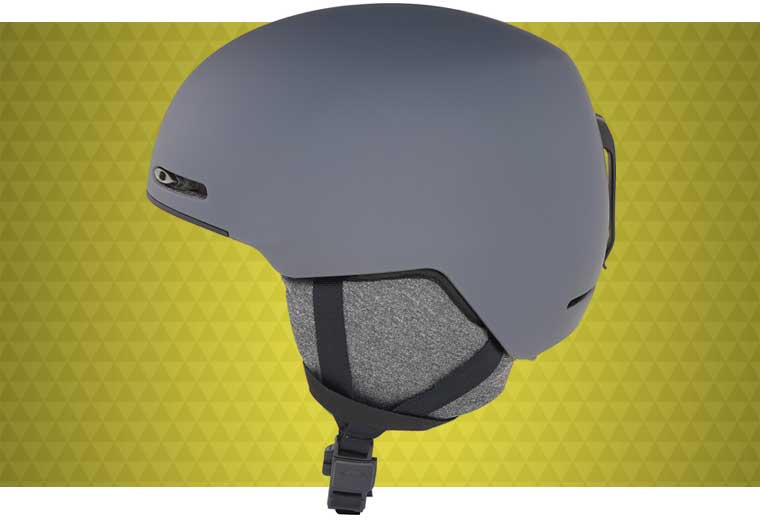
Oakley MOD1 Snow Helmet
Construction: hybrid in-mould
Weight: 1.3 lbs / 580g
Sizing: three sizes available
A trendy skate-style ski helmet with plenty of practical features, the Oakley MOD1 Snow Helmet is one of the best ski and snowboard helmets on the market. Its slim-line design has six fixed-open vents, including a googles/brim ventilation system that helps to keep your vision fog-free. As with most ski helmets, the MOD1 is fitted with a removable and washable liner and earpads. One stand out feature is the magnetic fidlock buckle on the chinstrap. This makes it easy to fasten and unfasten the helmet without taking your gloves off. It’s easy to adjust whilst wearing too, due to the Boa 360-fit system.
Pros
- Adjustable fit
- Easy-open buckle
- Compatible with MIPS liner (not included)
- Stylish design
Cons
- Vents do not close
Find the latest price on:
Amazon | REI
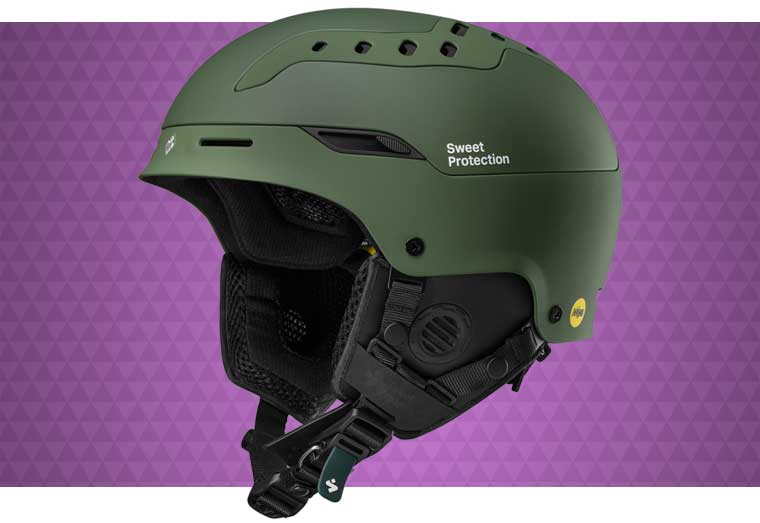
Sweet Protection Switcher MIPS Snow Helmet
Construction: hybrid in-mould
Weight: 1.3 lbs / 580g
Sizing: three sizes available
Made to be used in any weather, the Sweet Protection Switcher MIPS Snow Helmet is built with 24 adjustable vents – more than any other helmet on this list. Just turn the dial with one hand and you can switch between open and closed. Inside, the helmet is fitted with a removable and washable moisture-wicking 3D vented liner. Like the MOD1, this model has a quick-release magnetic buckle and dial fit-adjustment system. The earpads are audio-ready too.
When it comes to protection, this is up there with the safest ski helmets on our list. The variable elasticity shell combines an ABS hard-shell with polycarbonate in-mould technology. This is coupled with a shock-absorbent EPS liner and MIPS system.
Pros
- Superior protection
- Great ventilation
- Easy-adjust components
Cons
- Pricey
Find the latest price on:
Amazon | REI
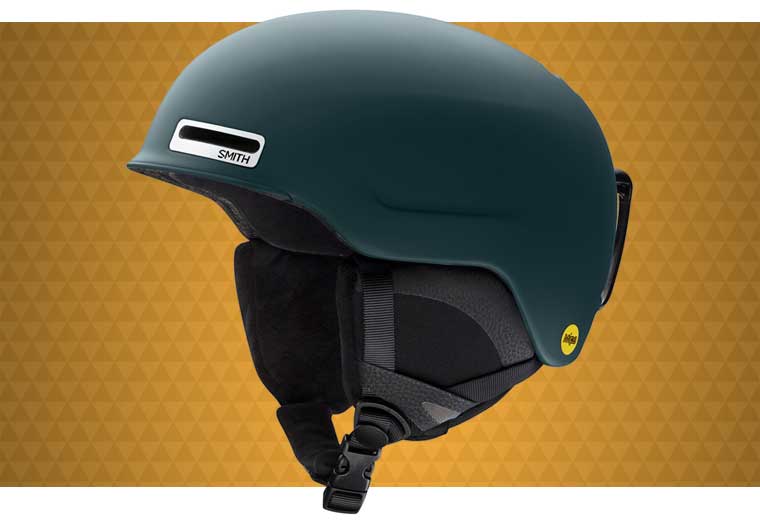
Smith Maze MIPS Snow Helmet
Construction: in-mould
Weight: 1 lb / 450g
Sizing: three sizes available
The Smith Maze MIPS is a minimalist helmet that delivers on both functionality and price. It’s far simpler than the high-priced Smith Vantage, but what it lacks in features it makes up for in low weight. The in-mould construction keeps the weight and bulk to a minimum while an integrated MIPS system provides extra protection. The helmet is beanie compatible and ventilation is provided via nine fixed-open vents. On a warm day, you can also remove the ear pads. Without a dial, the Smith Maze isn’t as easy to adjust as others on this list. That said, the cage does have three adjustment settings, removable padding, and an elasticated fit-system.
Pros
- Lightweight and well ventilated
- Fitted with MIPS
- Goggle and audio compatible
Cons
- Vents fixed open
- Can’t adjust the size whilst wearing
Find the latest price on:
Smith | REI
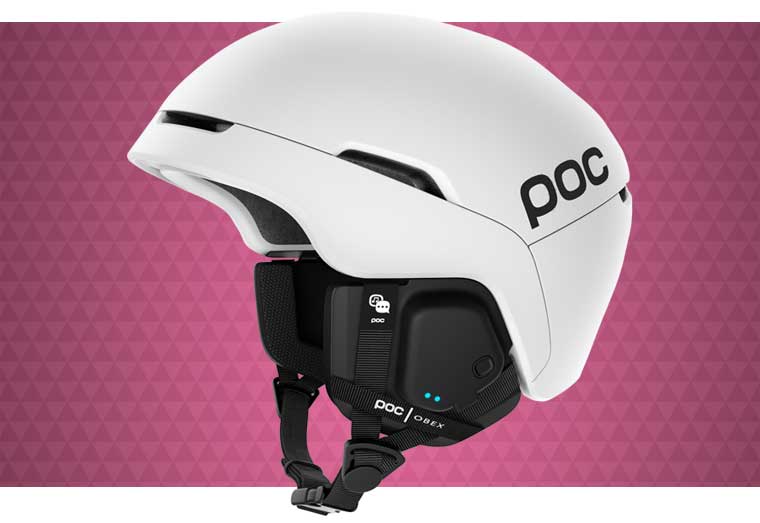
POC Obex SPIN Communication Snow Helmet
Construction: hybrid
Weight: 1.1 lbs / 500g
Sizing: three sizes available
Our winner for the best Bluetooth snowboard helmet in 2024 is the POC Obex SPIN Communication. This high-tech helmet allows you to connect your smartphone and communicate with fellow skiers or listen to music wirelessly. This POC snowboard helmet is ahead of the crowd on safety features too. The durable ABS top shell is reinforced with lightweight polycarbonate inner-shell and ESP liner. This model also features SPIN technology which, like MIPS, protects your head from the rotational forces of an angled impact. Other useful features include 11 air vents with sliding covers, a 360 easy-adjustable tension system, and fixed goggle clip.
Pros
- Built-in Bluetooth headset
- Adjustable vents
- Easy-adjust size
- Superior impact protection
Cons
- High price tag
- Feels a little bulky
Find the latest price on:
Amazon | REI
The best ski and snowboard helmets for kids
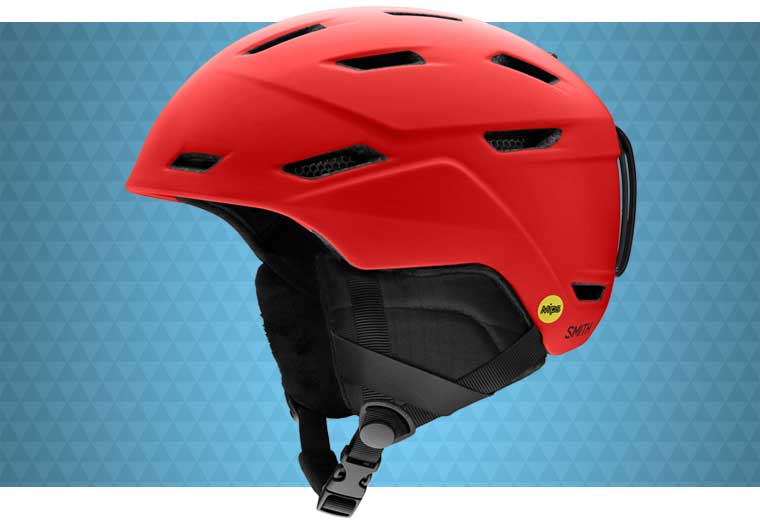
Smith Prospect Jr. MIPS Snow Helmet
Construction: in-mould
Weight: 1 lb / 45og
Sizing: one size
Designed with growing skiers in mind, the Smith Prospect JR. MIPS Snow Helmet is made with a dual-stage liner system. This should fit kids aged between 2 and 12 years old. Simply remove the liners as your child grows and fix the lid in place with the adjustable dual-fit system. The helmet also features a soft fleece liner and 14 vents. Most importantly, this Smith snowboard helmet provides excellent impact protection thanks to the Aerocore in-mould construction with koroyd and MIPS technology.
Pros
- Will fit your child for years
- Durable construction
- Well ventilated
Cons
- Vents are fixed open
Find the latest price on:
Smith | REI
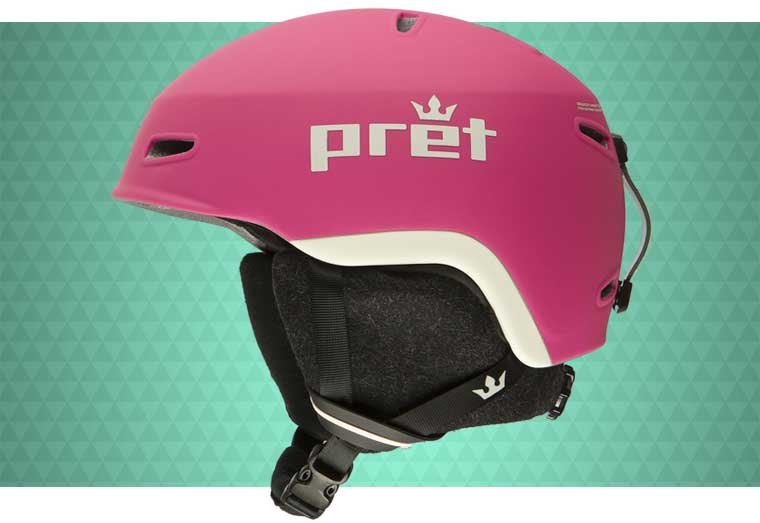
Pret Kid Lid Snow Helmet
Construction: in-mould
Weight: 0.8 lbs / 390g
Sizing: two sizes available
The Pret Kid Lid Snow Helmet protects your child with ACT in-mould multi-shell construction. It’s lightweight and well ventilated. Meanwhile, an ultra-fleece lining and RCS quick-fit system ensure a comfy and cosy fit. The lining is also removable and washable so there’s no need to worry about bad odours or bacteria. This helmet is audio ready too, so your kids can listen to music whilst enjoying the snow.
Pros
- Durable shell
- Soft lining
- Audio compatible
Cons
- Not as adjustable as the Smith Prospects JR.
Find the latest price on:
REI
What to look for in the best ski and snowboarding helmets
Construction types
Hard-shell helmets are the most durable. They’re most commonly made from ABS plastic and lined with ESP foam. Hard-shells tend to be cheaper but are slightly heavier and bulkier.
In-mould (soft-shell) helmets are much lighter, less bulky, and tend to have more vents, however, they don’t offer the same durability as hard-shells. They’re typically made from a thin layer of polycarbonate which is moulded to an internal EPS foam layer.
Hybrids helmets are the best all-rounder option but often the most expensive of the three types of helmet. They combine the lightweight and slim aesthetic of an in-mould helmet with the durability of a hard-top layer.
Size and adjustability
Standard helmet sizes are small, medium, or large. The measurement corresponds with the circumference of your head, just above the ears and eyebrows. Sometimes helmets are available in extra-large, children’s sizes, or in a man/woman-specific fit. You can check the sizing measurements on the manufacturer’s website. Some helmets fit best on rounder heads while others are better for slimmer heads. We recommend trying the helmet before you invest your money.
Adjustability is key to a comfortable fit. The most popular adjustment system in ski helmets is a dial tension system, such as Boa dials, which allows you to tighten or loosen the helmet with one hand. Other useful adjustment features include elasticated fit-systems, removable padding, and an adjustable chin strap.
Warmth and ventilation
The best snowboard helmets keep your head warm but still allow air to circulate. As a rule, the more vents the helmet has, the better the ventilation.
Often, mid to top-range helmets have adjustable vents that can be opened and closed with one hand. One thing to look for is goggles/brim vents, these should sit flush with your ski goggles. If the vents don’t match up, fogging can be an issue.
Some helmets have non-adjustable vents which are better on warmer days or when paired with a beanie hat. Helmets with fleece/wool liners and additional padding are better at insulting. They’re more comfortable too. While helmets with removable earpads offer greater versatility.
Extra features
MIPS compatibility
This is an additional safety feature which has been developed for commercial use in the last few years. It helps to protect your head from side impacts and is generally viewed as providing superior protection compared with traditional helmet designs. MIPS is already built into some helmets; others are MIPS liner compatible.
Goggle compatibility
Most ski helmets are goggle compatible, with goggle/brim vents on the front and a fixed or removable goggle clip on the back of the helmet. Bear in mind that not all helmets will pair with any brand of goggles. Some helmets sit low on the forehead, putting pressure on the top of the goggles, while others sit high, leaving a gap for icy air.
Electronics compatibility
Like to listen to music while you cruise the slopes? Many ski and snowboarding helmets are audio-ready. The best snowboard helmets with audio have a headphone storage space built into the earpads or headspace. Some models even come with built-in Bluetooth speakers and microphone or attachments for mounting an action camera.
Removable liners and ear pads
A washable liner is a real bonus for hygiene, but removable liners and earpads also make a more versatile fit and improve insulation/ventilation. Many of these types of helmets are also suitable for cycling and skating during the warmer seasons.
Travel case
Not an essential, but a protective case can help to extend the life of your ski helmet, particularly if you travel a lot.
Helmet certifications
The best looking snowboard helmet isn’t necessarily the safest. Any helmet you buy should be certified by a credible organisation. Common certifications for skiing and snowboarding safety apparel include:
- ASTM F2040
- CE EN 1077:2007 Class A or Class B
- EN 1078
- CPSC


